Spomenik. Architectures of
sublime memory
Ottavio Amaro, Francesca Schepis
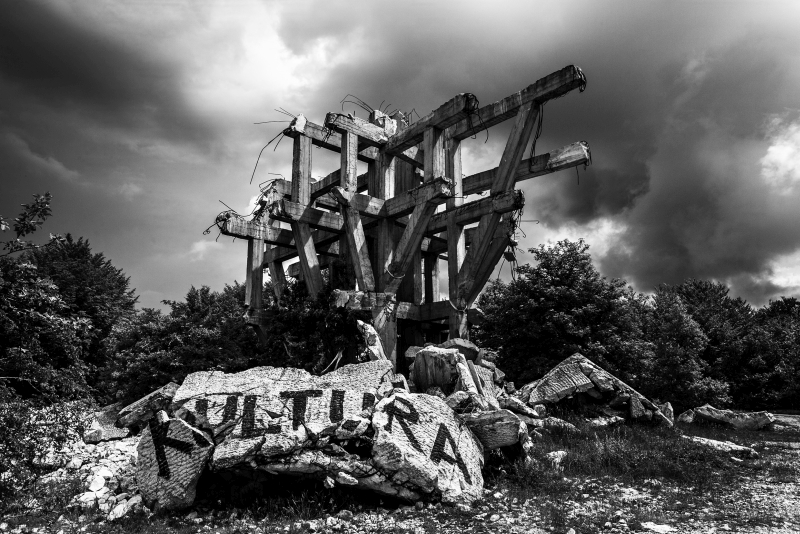
Fig.
1 - Boško Kućanski, Il Pugno, Makljen, Bosnia ed Erzegovina,
1978. Photo by Alberto Campi, +38, 2017.
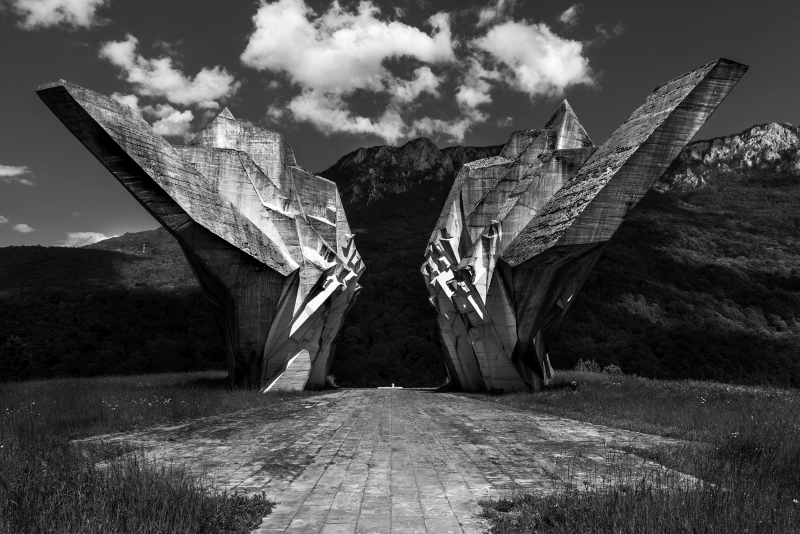
Fig.
2 - Miodrag Živković e Ranko Radović, Memoriale della battaglia di
Sutjeska nella valle degli eroi, Tjentište, Bosnia ed
Erzegovina, 1971. Photo by Alberto Campi, +38, 2017.
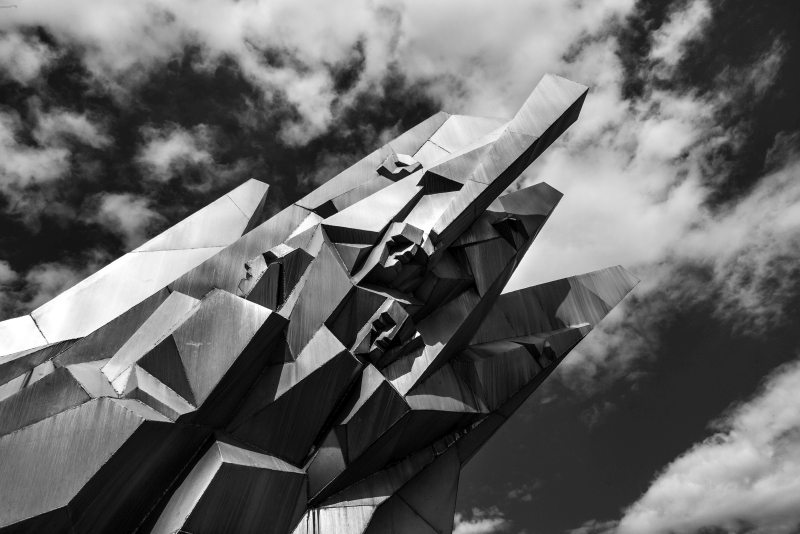
Fig.
3 - Miodrag Živković e Svetislav Ličina, Monumento al coraggio, Ostra,
Serbia 1969. Photo by Alberto Campi, +38, 2017.
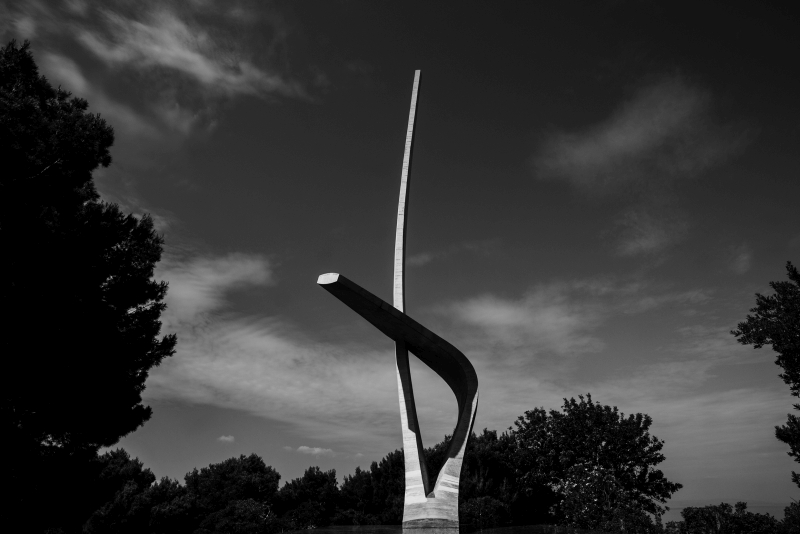
Fig.
4 - Rajko Radović, Podgora, Ala di gabbiano, Croazia, 1962. Photo by
Alberto Campi, +38, 2017.
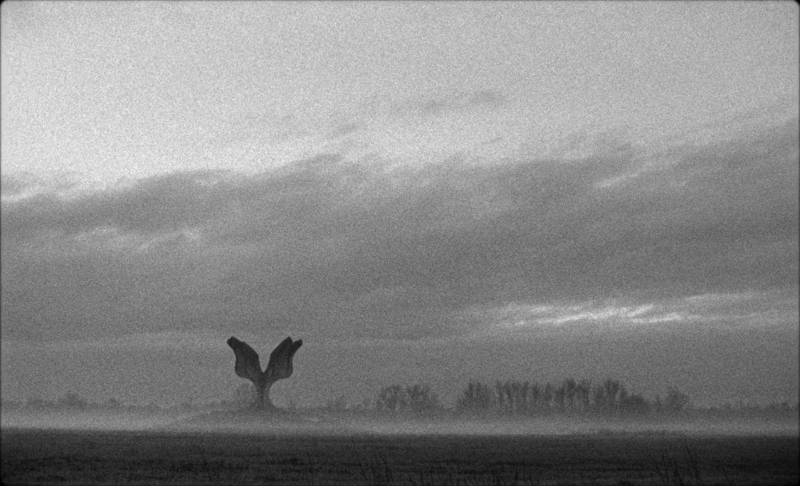
Fig.
5 - Jóhann Jóhannsson, Last and first men, 2017,
frame.
Fig.
6 - Jóhann Jóhannsson, Last and first men, 2017,
frame.
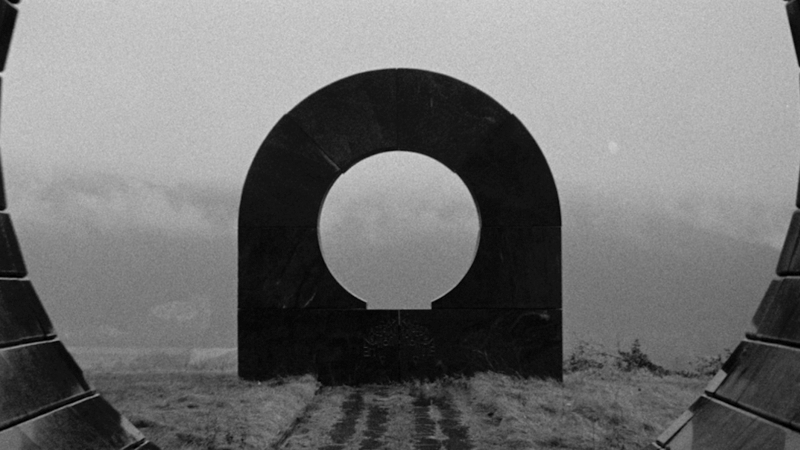
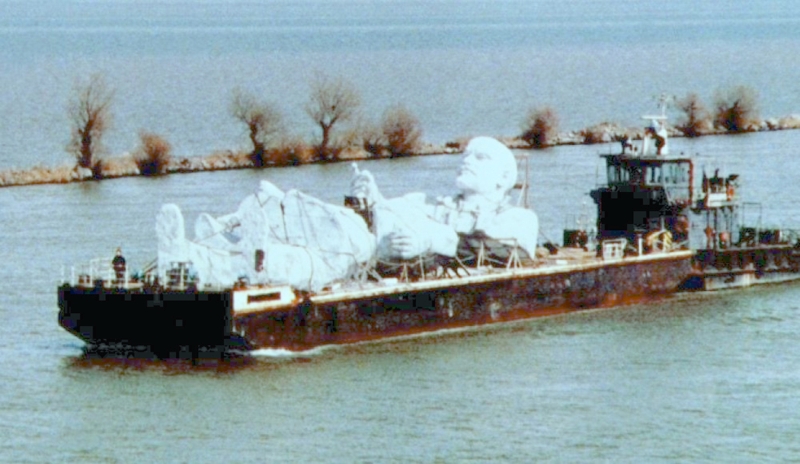
Fig.
7 - Theo Angelopoulos, Lo sguardo di Ulisse, 1995, frame.
Fig.
8 - Theo Angelopoulos, Lo sguardo di Ulisse, 1995, frame.
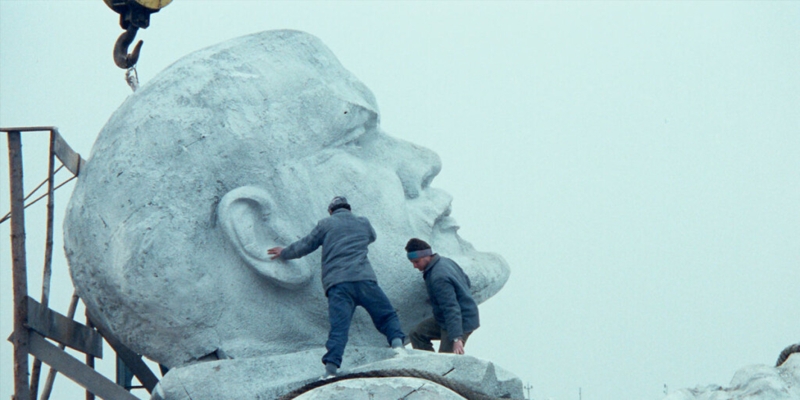
Introduction
Spomenik is the word for “monument” in
Serbo-Croatian language. It refers to memorial architecture and art
altogether as the outcome of a civic resistance strategy to
Nazi-Fascism linked to Tito’s government in Yugoslavia. He knew
the need to project so many pluralities of different cultures and
histories into an idea of a unified state. The result is countless
signs and symbols made over about fifty years, hard to list in their
entirety. This mosaic still overrides geographical, administrative, and
cultural boundaries today in a time of new divisions. A high membership
value was entrusted to the characters of civic art, conveyed through
the plastic expressionism of form and scalar relationship without
direct figurative and rhetorical connotations. Thus, it could dialogue
with the landscape scale without renouncing possible evocative and
poetic references. They are monolithic and assertive signs, shaped by
the time of light and shadow, along with the display of the solid
matter represented by concrete, typical of a brutalist
expression. They are a sign of Yugoslavia’s modernity and
differentiation within the world of “Soviet Realism” and
indeed represent new constructive dialectics in the postwar Western
debate beyond mute international rationalism.
Historical events and critics’ discovery
The first approach to the monuments-symbols of recent Balkan history
can be considered the photographic campaign by Jan Kempenaers between
2006 and 2009, shown in a traveling exhibition between Belgium,
Holland, and the United States. It was then documented in the book Spomenik
(Kempenaers, 2010), published in collaboration with the Academy of Fine
Arts in Ghent. The Antwerp-based photographer’s gaze captures and
captures sculptural constructions in a precise atmospheric condition,
choosing the abstraction of diffuse twilight. The imposing masses of
granite, reinforced concrete, or steel are framed in a condition of
nature not inhabited by living beings, pure and isolated, casting no
shadows on the ground to tie their presence to their location. Instead,
they look like timeless apparitions. In presenting the first stage of
the exhibition, Willem Jan Neutelings introduced an important point of
view on the theme of time. Spomeniks sprung up in places that
hosted horrendous war events during World War II but also led to civil
confrontation between the different cultures of the multi-ethnic
Yugoslavia: partisans, ustaše, and chetniks against each other
in the fury of destruction. At the dawn of reconstruction, after the
establishment of the republican federation, the objects of memory could
not carry any still-divisive symbols. Instead, they had to free
themselves from any figuration in the abstraction and boldness of pure
sculpture. Rather than the image of a mournful past, they had to be the
beginning of future, widespread, and universal equality. Even so, as
Neutelings invited to reflect, the internecine warfare a few decades
apart and the blind desire to dismember the spomeniks
violently called into question not only the socialist state but the
very possibility of coexistence. Perhaps this is why Jan
Kempenaers’s photographs deny the monuments any form of life
other than vegetal or mineral.
Architectural critics began to show widespread interest in these
monumental sculptures with the exhibition Toward a Concrete
Utopia. Architecture in Yugoslavia, 1948-1980, held at MoMA New
York between July 2018 and January 2019 under the curatorship of
Martino Stierli and Vladimir Kulić. The exhibition is, in fact, the
first retrospective on socialist architecture designed and built in the
Balkan territories of the former Yugoslavia. Its great merit was to
highlight the richness and complexity of a physical reality designed
and constructed to give concrete form to a new political and social
reality. Balkan socialist architecture represents the spatial pattern
for a moment of great historical transformation involving thousands of
people under one ideal.
Few moments in history have witnessed a condition of total
interdependence and simultaneity between the construction of a new form
of society and the construction of the landscapes, the city, and the
buildings intended to house it. One was considered inseparable from the
other. The New York exhibition features four sections arranged as
follows: “Modernization,” examining the role of
architecture in the rapid urbanization and industrialization of a
largely rural country; “Global Networks,” which examines
the role of Yugoslavia’s foreign policy in shaping its tourism
and creating large-scale construction projects at home and abroad;
then, “Everyday Life,” exploring the country's mass housing
projects and the emergence of modern design in a socialist consumer
culture. Finally, the “Identities” section addresses the
relationship between Yugoslavia’s regional diversity and national
unity.
These sections give vast space to collect, catalog, and display the
projects, photographs, models, and documentary films of the spomeniks.
They highlight the continuity across the monuments’ ideational
moment – when the artistic-architectural project takes shape
– realization and spatial and evocative results.
Since this pivotal starting point in the rediscovery of such a
conspicuous heritage, attention to the architecture of the Federated
Balkans has grown exponentially. Indeed, the past five years have
witnessed many scholarly research works, photographic projects, and
film documentaries themed on the extraordinary story of a realized
utopia.
Some of the most relevant ones – to mention the leading and
best known – include the work of Donald Niebyl with the Spomenik
Database site and volume (Niebyl, 2018); Boštjan Bugarič,
who was one of the curators of the exhibition Architecture.
Sculpture. Remembrance. The Art of Monuments of Yugoslavia 1945-1991;
Alberto Campi with +38 (Campi, 2020), a poignant photographic
reportage of his journey across all the member states of the former
Federal Republic; the very recent exhibition Stones Between the
Fronts. Anti-Fascist Monuments on the Territory of Former-Yugoslavia,
which opened on September 14 this year at the Architekturzentrum Wien
under the curatorship of Melanie Hollaus and Christoph Lammerhuber, in
collaboration with MuseumsQuartier Wien and Architekturzentrum Wien.
The exhibit includes full-scale analog models of two spomeniks
and virtual reproductions of some environments, attempting to render
the complexity of the memorials through augmented reality. Most
importantly, it also has countless sketches and technical drawings by
Bogdan Bogdanović, of which the Architekturzentrum Wien holds 12,500
examples in imperishable memory.
In an interview with Dániel Kovács (Kovács,
Bugarič, 2020) for the web page of “Domus,” Boštjan
Bugarič explained the correlation between the exhibition Architecture.
Sculpture. Remembrance and MoMA’s encyclopedic exhibition.
He pointed out that the diffusion of Yugoslavia’s architectural
culture has even earlier origins, traced back to the exhibition of the
national pavilion at the 39th Venice Biennale in 1980.
There, the architects themselves – Bogdan Bogdanović,
Dušan Džamonija, Slavko Tihec, and Miodrag Živković –
presented their work and made it known on a global scale. They were
aware that they had accomplished and shaped a cultural revolution.
After being destroyed shortly after that, their work was revived in the
first decade of the ‘00s by the Association of Croatian
Architects in collaboration with the Maribor Art Gallery in the project
Unfinished Modernisations - Between Utopia and Pragmatism,
first organized regionally, then becoming a more extensive network,
leading up to the conception and realization of the New York
exhibition. Meanwhile, Donald Niebyl’s impressive cataloging
work, Spomenik Database, began. Through an ever-developing
website, he attempts to reconstruct a comprehensive map of the places
of monumental architecture in the Federal Republic. The spomeniks
and President Tito’s houses, memorials, cemeteries, charnel
houses, and museums have been marked at their geographic coordinates.
In addition to the inventory of thousands of works, the catalog
includes the protagonists of this cultural revolution, the architects
and artists who left memories of a nation united under the sign of
culture across the federated states. Through this activity of research,
study, and popularization, the fate of the spomeniks
continues to bounce from one part of the world to another, perpetuating
– if not the sense of an ideal, egalitarian, and widespread
society – at least its deep and radical trust in the capacity of
the forms of art and, peculiarly, architecture to memorialize it.
Dialectic art and landscape
After the dispute with Stalin in 1948, a new artistic expression
was born,» says Boštjan Bugarič, «Abstract Modernism
became the main artistic expression in Yugoslavia with its innovative
approach, monumentality, and great expressiveness in the landscape
(Kovács, 2020).
Even today, despite the maps of the former Yugoslavia producing a
sense of disintegration and a dismembered geography, the spomeniks
identify an ideally unified territory through their quantity and
quality. They form a network of points and routes that mark places and
characterize landscapes without the need for geographical boundaries or
cultural, political, or ethnic constraints.
They still live by their artistic and architectural expressiveness
in a time suspended between the visible and invisible: «The
invisible is part of the visible, it is inherent in the visible: it is
the very condition, indispensable to the revelations that lead us to
knowledge. » (Turri, 2004) It is visible in its relationship with
the landscape, the essence of nature and history, nature and culture;
it is invisible in its ability to narrate places as an overlay of
memories and human events filtered through the idea of
“commemoration.”
So, if landscapes «are a field for reading the world»
(Venturi Ferriolo, 1995), these are “talking” places, where
spomeniks – memorials – serve as the most
appropriate megaphone for a society in search of symbols and moments of
collective identification in a specific historical period. In this
sense, the architectural and sculptural presences of the spomeniks
represent “the remnants” of a past and an ideal and
political tension. They are analog to landscapes bearing signs of the
past, with evocative “ruins” that add new and different
meanings in time and space. Undoubtedly, their scale of intervention
and expressive and plastic research reveal their landscapes. Yet, at
the same time, they become landscapes. Beneath a willingness to forget
and often to remove, there are silent ruins, mysterious and primordial
megaliths in their apodicticity, perhaps belonging now to an imagery of
a fantastic archaeology that retains all the expressiveness and
emotional pull proper to “unspeakable” objects as in Le
Corbusier’s acceptation. Therefore, on the one hand, we stand
before ongoing “desacralization” processes (spomeniks
often become locations for advertisements or commercial events) of
sites linked to events, commemorations, and collective rituals. On the
other hand, these constructions’ expressive and evocative
capacity, where architects and artists have dealt with cognitive and
transformative actions of the sites involved through a close and
virtuous relationship between art/nature/landscape, remains intact.
This relationship shows the non-rhetorical character of the spomenik,
which instead characterized the post-revolutionary evolutions of
socialist art. In the former, the language of art was not chosen to
enhance monuments’ figurative aspects and expressions of
personality worship; instead, it was tied to their sculptural and
architectural nature, projected toward abstraction and plasticity,
conceived as the union of form and matter.
The reference was not Soviet postwar art but a more Western culture
that was more open to innovation. Maybe it was more oriented toward the
German revolutionary tradition of the ‘20s, with Walter
Gropius’s Monument to the March Dead (Weimar, 1921) as
its highest and most authentic expression: no reference to figurative
art, no commemorative inscriptions, but only a sense of form and
matter. Its description by Giulio Carlo Argan could undoubtedly be
applied to many of the spomeniks made in Yugoslavia:
«In the ‘Monument to the March Dead,’ pure
plasticity is already conceived as coagulation and precipitation of
space through movement: such movement is not intended as an action or
route in a given space. It can only be the disruption of a balance, a
deviation from given constants, the landslide of oblique planes, and
slipping slopes. Matter is the product of that condensation of space,
traversed by a current of motion. It is no longer a primal matter
awakened by the artist’s will from natural stasis but an
artificial matter born with the form. Outside the form, it is nothing
but fluid and muddy mass, in perpetual motion and tension:
concrete.» (Argan, 1988)
The Monument to Karl Liebknecht and Rosa Luxemburg (Berlin, 1926),
designed by Ludwig Mies van der Rohe, retains the same spirit
yet different expressive values.
The major authors chosen to design the spomeniks are
architects, too, and have proven willingness to work on more general
spatial and landscape aspects. This is “encyclopedic”
experimentation with a possible marriage between architecture and
sculpture. Despite being bound by their own compositional and
functional statutes, both arts operate on these installations –
spatial designs, objects, or hybridized elements in their relationship
of scale and function. Whatever their nature, these constructions are
aimed at a new aesthetic, figurative, and symbolic achievement with
great emotional relevance regarding the identity of territories and
landscapes.
The weight of memory
One of the aspects discussed in this paper is the relationship
between the monument, the physical substance of a testimony meant to
last over time, and what revolves around it: the ritual performed by
its visitors’ movements, who fulfill the function it was erected
for.
The question dissolves into a rhetorical stance. Does someone have
to go to the monument for it to have a reason? Instead, is it possible
to assume that just their physical presence is sufficient? The two are
not separable. Users’ ritual comings and goings are an integral
part of its essence, fulfilling its function and giving it meaning.
That action incorporates the meaning of its presence. The colossal and
imposing spomenik sculptures, works of melancholic land
art, are perfected through the visitor’s ritual of
approaching, gazing at, and renewing memory. Thus, they become
architecture. Artists and architects have designed them almost entirely
stripped of figurative or stylistic elements, echoing archaic and
ancestral structures from other spatiality and temporality. The spomeniks
are almost always set in wide landscapes where nature predominates over
anthropization as if to indemnify the history of those places for the
grave and mournful events they hosted. In this process, therefore,
rituality moves from the scale of the sculptural object to the
architectural one, which inhabits a place and is inhabited, up to the
large scale of the landscape it connects to.
At the beginning of his best-known work on the character of the
image in the Western world, Life and Death of the Image
(Debray, 1992), Régis Debray is primarily concerned with
defining its origin as a representation of death. «The birth of
the image is closely related to death. But if the archaic image springs
from the graves, it is out of a rejection of nothingness and to prolong
life» (Debray, 1992). From the initial lines, it defines the
intimate correlation between tomb and monument, which appears innate
among ancient populations, almost as if it were the outcome of a
spontaneous ritual.
Architectural modernity then led to Adolf Loos’s celebrated
definition of architecture as recognizing a burial place. For the
Austrian master, only by transcending functional purpose, stripped of
all practical reason, can architectural space rise to the status of a
work of art. Such honor belongs only to the tomb and the monument:
«If we find a mound six feet long and three feet wide in the
forests, formed into a pyramid, shaped by a shovel, we become serious
and something says: someone lies buried here. That is architecture.»
(Loos, 1910).
It means recognizing altogether a form - the earthly body
emptied of gaze, light, and breath - and a ritual - the
burial of mortal remains - which transcends culture, religion, and
place, which is universally identified only because it aligns with our
emotional chords, our human feeling.
The presence of the spomeniks spread across the landscape
of the former Yugoslavia portrays the continuous fulfillment of this
recognition. They perform a secular ritual, far from any form of
religion, but dense with deep spirituality. The currently visitable
monuments impose a precise mode of approach on those who observe them,
an exact time to travel the distances between one element and the next.
Even the sequence in which the various parts appear has been somewhat
pre-determined. Their ingenious creators range from the well-known and
oft-mentioned Bogdan Bogdanović to Dušan Džamonija, who took the
monumental spatiality of a spomenik to the Italian shores of
the Adriatic Sea in the Ossuary of the Slavic Fallen in Barletta
(Tupputi, 2021), from Montenegrin architect Svetlana Kana Radević to
Miodrag Živković with his audacious structures. Maybe they hoped this
would happen despite time and the brutal and irrespective damnatio
memoriae.
Significantly, the weight of this timeless ritual can be seen in the
film Last and first men, Icelandic musician Jóhann
Jóhannsson’s first and only cinematic work, first shown in
its embryonic form in 2017 at the Manchester International Festival,
with live accompaniment performed by the BBC Philharmonic. Then, it was
presented in its final version at the 2020 Berlin Film Festival,
posthumously, almost two years after the untimely death of its director.
The film is a cinematic transposition of Olaf Stapledon’s 1930
first science fiction novel and tells of a civilization of immortal
humans capable of telepathic communication. While awaiting the end of
Earth and the entire system due to the disintegration of the Sun, they
rediscover their survival instincts and try to oppose their earthly
end. The 16-mm film fixes, in a blurry, dusty black and white,
interrupted only by a few green lights and the red image of the Sun,
are combined with the scenes of a world difficult to place in time and
space. Director Jóhannsson chooses to film them in the locations
of the spomeniks. Often framed at an angle or from an unusual
point of view, sometimes from the ground upward or in a partial
close-up manner, they are not just film sets but become the
protagonists of the action. Tilda Swinton’s narrative voice
completes the work and gives it an otherworldly aura, betrayed only by
the emotion of mankind’s disappearance. The camera slowly glides
over the surfaces of the monuments, which vibrate in their textural
chiaroscuro and are succeeded by images of forests, clouds, and skies,
as if to relocate them in a new state of memory.
Conclusions
The fate of the spomeniks matches the crisis caused by the
Balkan wars in the ‘90s. Along with economic, geographical,
anthropological, and historical factors, the crisis takes on the guise
of a cultural crisis, often capable of quickly losing and forgetting a
historical and architectural heritage of great identity value. The end
of the regime brought along the plan of destroying symbols and
testimonies representing the memory of a time that employed
considerable human and intellectual resources. Yet, its urban,
territorial, and artistic outcomes must be brought back and valued
within the more general heritage of humanity. In this sense, the
experimental laboratory pursued by Tito’s cultural and
territorial policies, aimed at creating a ‘socialist
modernism’ away from the rhetorical emphasis of the Soviet Union
and with an eye toward Western innovation, is still a model to be
studied and valorized through the testimonies and examples still
present. The spomeniks are among the most significant and
representative permanences of Balkan and Brutalist artistic and
architectural culture: their fate cannot be to end up like the
fragments of Lenin’s statue that director Theo Angelopoulos set
to sail on the Danube in Ulysses’ Gaze (1995),
as a metaphor for the drift of a population’s memory.
Bibliography
ARGAN G. C. (1988) – Walter Gropius e la Bauhaus.
Einaudi, Turin.
DEBRAY R. (1992) – Vie et mort de l’image,
trad. it. Vita e morte dell’immagine 1999. Il Castoro,
Milan.
KOVÁCS D. (2020) – “Jugoslavia 1945-1991: un
patrimonio da riscoprire. Intervista a Boštjan Bugarič”.
Domus, [e-journal], 25.11.2020.
LOOS A. (1910) – Architektur, Italian Translation. Architettura
(1^ ed. 1972). In: Id., Parole nel vuoto, Adelphi, Milan.
STIERLI M., KULIĆ V. (2018) – Toward a Concrete Utopia:
Architecture in Yugoslavia 1948-1980. New York: Museum of Modern
Art.
TUPPUTI G. (2021) – FAMagazine, [e-journal] 57/58, 158-165.
TURRI E. (2004) – Il paesaggio e il silenzio.
Marsilio, Venice.
VENTURI FERRIOLO M. (1995) – Un pensiero senza bordi.
In: R. Salerno, Architettura e rappresentazione del paesaggio.
Guerini e Associati, Milan.







